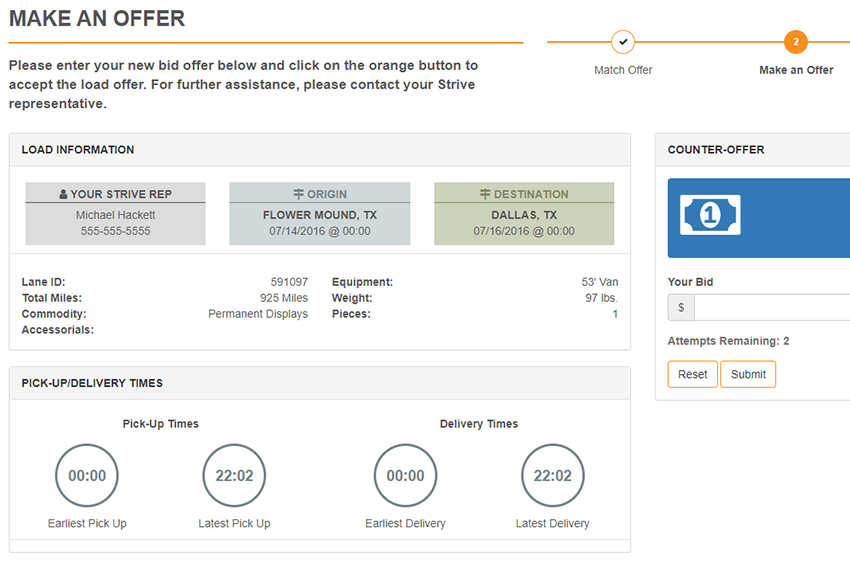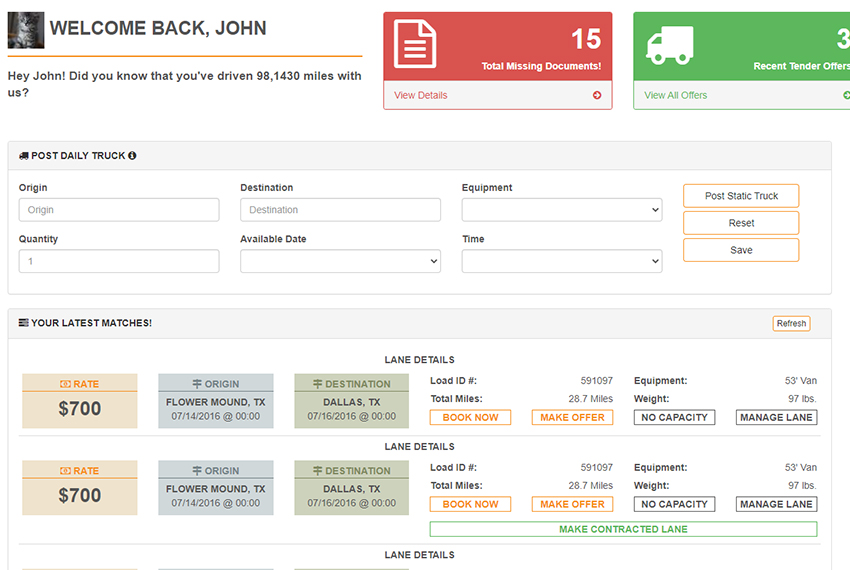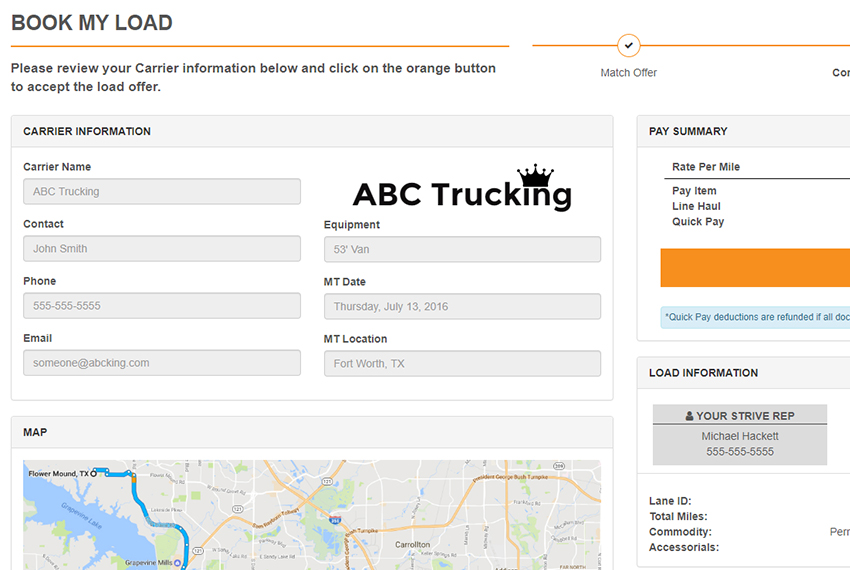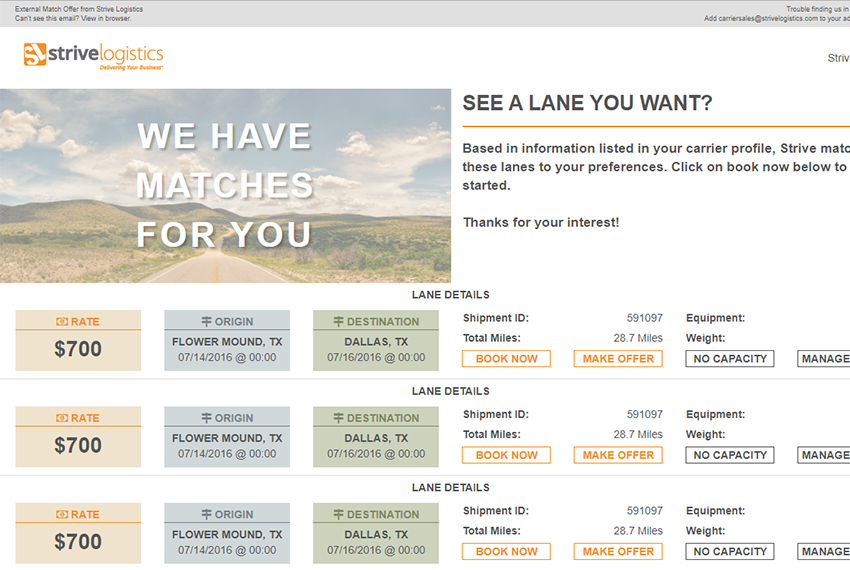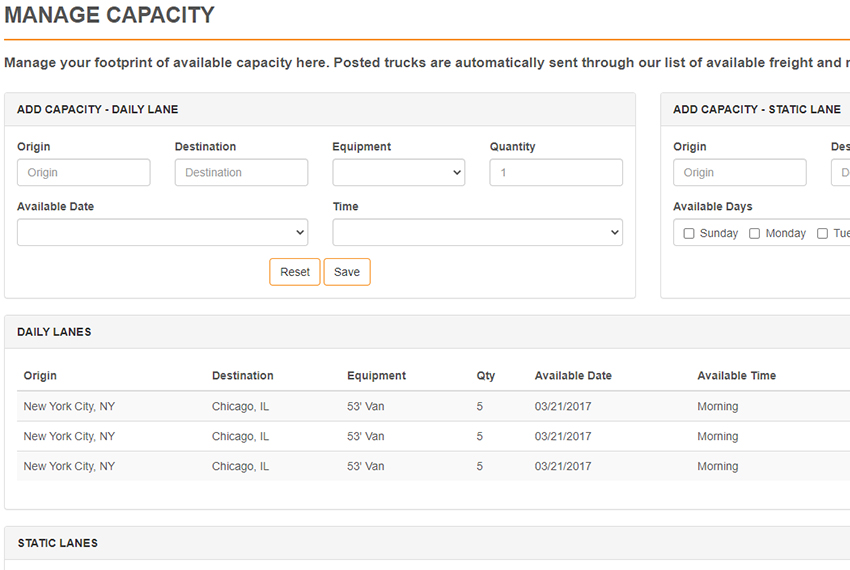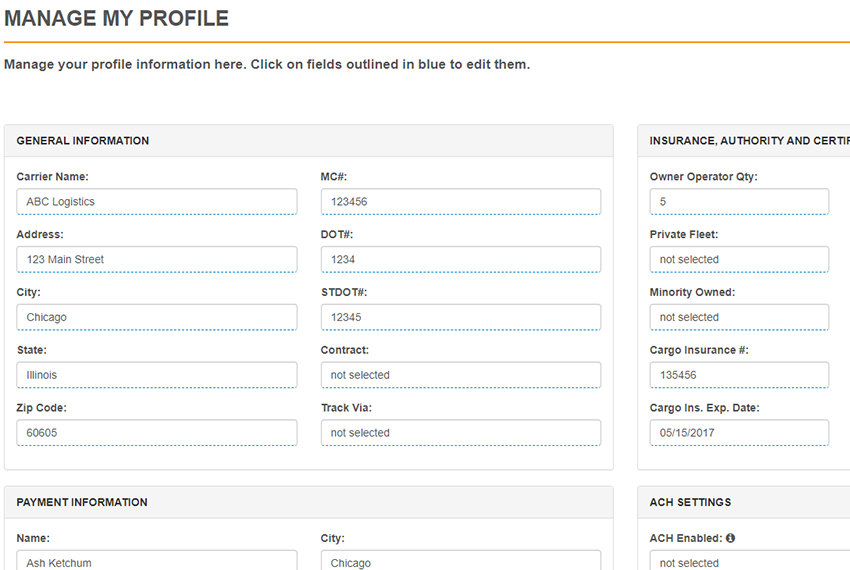Prototype
Carrier Portal
Project details
A highly experimental project, the Carrier Portal was envisioned as a self-service portal for those on the carrier side of the logistics industry who wanted more control over what freight they hauled. The portal's main purpose was to drive carriers to accept hauling jobs without the hassle of a middle-man who traditionally facilitates the bidding process between carrier contracts. The javascript simulated auto-bidding process would be algorithmic driven based on details provided by or collected about the carrier, including their equipment types and job preferences.
Team Involved: Designer (myself)
Project Owner: VP of Operations
Stakeholders: CEO, Director of IT, Carrier Sales Manager, Application Development Manager
My Role: As the UI/UX Lead, I worked with the stakeholders to create the user journeys, user personas, wireframes, and a functioning prototype they could use to pitch to potential investors. I also led a small design team and guided the development team to understand workflow patterns and help build the production level code.
-
Category :
Prototype
-
Usage :
Business to Business
Web Application -
Technology :
HTML, CSS
Javascript
Bootstrap
Carrier Needs
Strive wanted a clean, simple interface that was mobile-friendly. As the company dealt with many different types of carriers, from small business owner-operators to larger carrier freight management companies, we had no idea if a person would be viewing the web portal on their work desktop, laptop, tablet or personal mobile device. We also understood with the company's desire to branch out into multiple locations and countries, while English was the primary language to start, we wanted to include icons that would be more universally recognized regardless of language to help users along the correct workflow paths. With these design decisions in mind, we created a simplistic web portal with easy, step-by-step instructions that would guide users to completing goals of booking freight, managing their accounts, and bidding on potential freight.
Why Digital Matching?
Digital Matching freight to carriers was an often theorized, but rarely created piece of the logistics industry, as there were many factors that go into why a carrier picks up particular freight. My VP of Operations knew that this was a multi-billion dollar industry that had untapped potential, as the world of logistics was technology deficient. We knew that if we created an algorithim fueled by the statistics in our current carrier database based around freight they most frequently took and likely were to take, we could create a matching system that rated freight matching based on our confidence of the carrier taking the job at a rate that would work for the carrier while helping the company create profit.
Testing
In order to test the adoption of our new program, instead of launching everything at once, we started off with a Digital Matching email. As we knew most of our carriers received emails from us for other communication, we set up an easy way for carriers to receive freight matches based off their preferences and to one-click confirm their acceptance of the freight. We also sent it to our most trusted carriers that we frequently conducted business with, coupling the email with a carrier representative who was available to answer any questions the carriers had about the new way of freight booking.
Results
Within the first three months, we saw a rise of 15% freight booked via the email alone, leading to millions of dollars of revenue for the company. Once we were ready to launch the portal, we followed the same process as the testing phase to ensure user adoption was met. With the launch of the web portal, we again saw a rise in both instant booking and freight bidding, leading the company from a $1 billion valuation to $3 billion within the first six months of the site launch.

